I’d like to ask you a question: when was the last time you felt great about the world? Not the last time you were in a good mood or something happened to brighten your day, but the last time you were truly hopeful for our future. The last time you believed, legitimately, that tomorrow will be better than days past. When was the last time you could say that? For most of us, I bet it’s been a while.
It seems that most everywhere we look today, our future seems destined for darker times. Even if the polar ice caps weren’t melting before our eyes,[1] our planet’s biodiversity wasn’t rapidly going extinct by our hand[2] and wildfire wasn’t laying waste to rainforests,[3] vast geographical regions[4] and entire nations,[5] our time is still deeply imperiled. Representative democracies are waning worldwide against the rise of populist, authoritarian nationalism.[6] Multicultural societies are facing crises of conscience in the face of mass migration from strife and conflict.[7] Partisan division and rampant misinformation have sown seeds of enmity throughout our social fabric.[8] The long peace[9] threatens to unravel as the drumbeats of brinkmanship[10] and war begin to sound progressively louder.[11] And that’s just what’s on the news.
Yet the most serious reasons our horizon grants cause for alarm are rooted deeper, into something more structural, and ultimately, something more fateful. To explain why, we’ll take a brief step back and afford ourselves a high-level view of where we stand at present.
Radiological dating tells us definitively that the first page of the human story began at least 200,000 years ago.[12] From the moment we made our first steps, it took us nearly that entire length of time to reach a population of 1.5 billion people – a milestone achieved around 1900.[13] Yet barely a century later in 2010, we reached seven billion people, and we’re well on track to hit ten billion by 2050.[14]
As it’s difficult to put those numbers in perspective, the following figures help establish a more succinct context:
Our approximate time to reach 1.5 billion people: 200,000 years.
Our approximate time to grow from 1.5 billion to 7 billion people: 110 years.
Our estimated time to grow from 7 billion to 10 billion people: 38 years.
This chart shows humanity’s population growth since height of Rome:
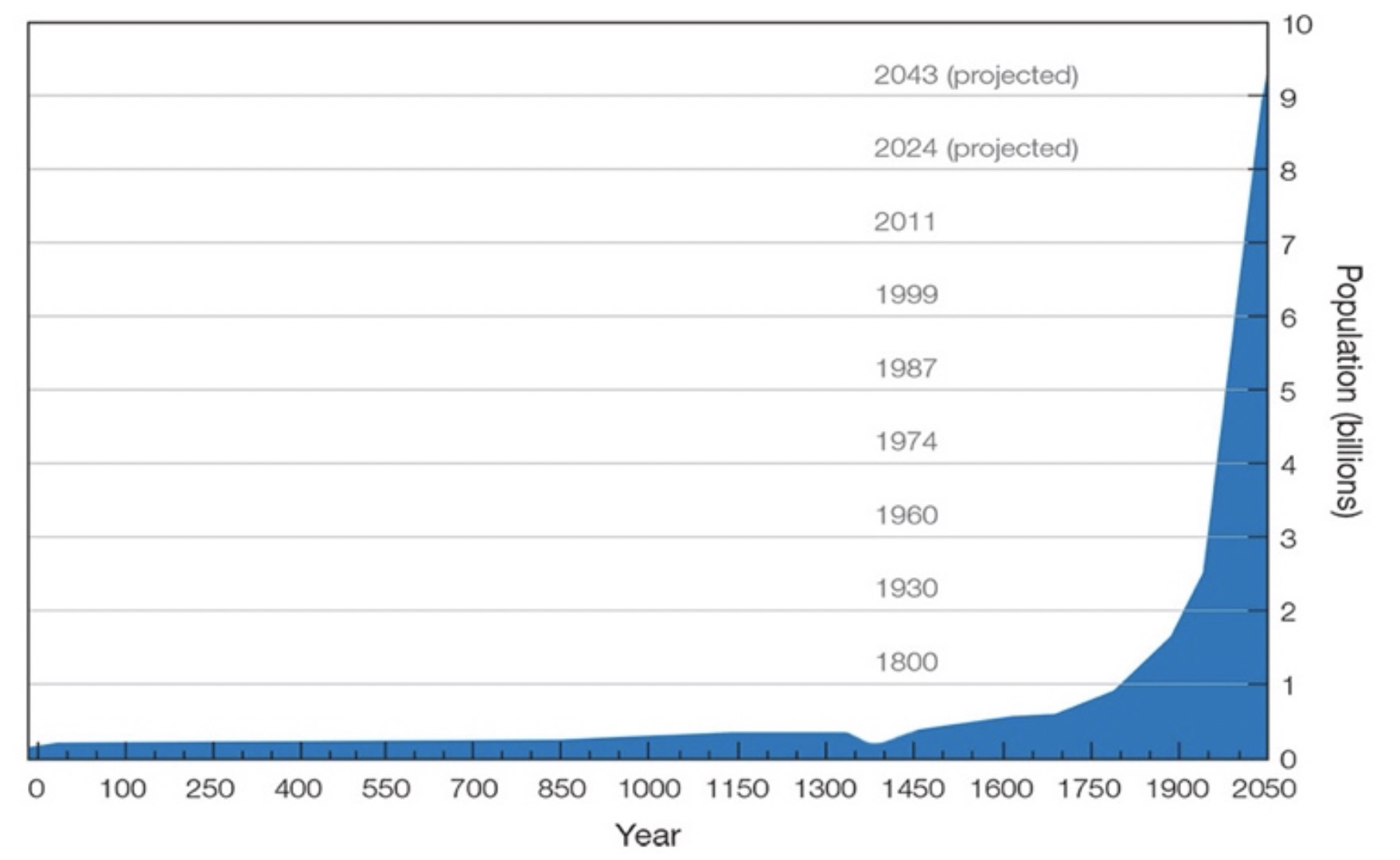
In the image below, each of the 2,000 rectangles equals one century. The blue rectangles, in aggregate, represent the entire length of time it took humanity to reach 1.5 billion people. The lone black rectangle (last) represents the time it took humanity to grow from 1.5 billion to 7 billion people.
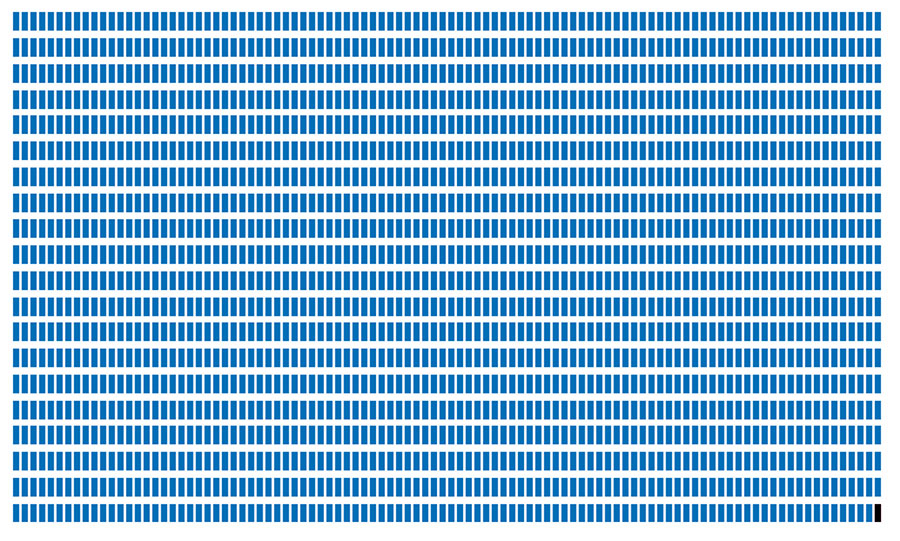
This growth – and the rise of the civilizations that encompassed within – has been powered exclusively by natural resources. As our population has rapidly expanded, so too has our rate of resource consumption – far past the thresholds that spawned Thomas Malthus’ Principle of Population and the 1970’s-era Limits to Growth – famous publications forecasting the dangers of rapid population expansion and its accompanying over-extraction of resources. [15]-[16] Our population as of 2020 has increased sevenfold from Malthus’ time, and is today twice the population of the 1970’s. Consequently, we are now consuming resources so rapidly and on such an immense scale that it’s destroying our planet’s ability to support our existence. In a world of sensationalist media, such a claim might seem exaggerative. In the world of facts, it’s an understatement.
A short list frames our circumstances in sobering perspective:
- Since the start of the Industrial Revolution, we’ve cut down more than half of the world’s forests.[17]
- Plant and animal species are dying off so rapidly that global scientific bodies conclude that humanity has caused Earth’s sixth great extinction event,[18] which has the potential to wipe out millions of years of evolutionary history.[19]
- Global fish stocks are overexploited by 80%,[20] and ecologists predict they may collapse entirely by as early as 2048.[21]
- Ocean acidification is occurring at a rate not seen in the last 300 million years and Earth is estimated to have lost half of its shallow corals in the past three decades.[22] If current trends continue, this figure is estimated to rise to 90% by 2050.[23]
- Between 1970 and 2014, Earth saw a 60% decline of its mammal, bird, fish, reptile and amphibian species – almost exclusively due to human activity.[23] Since the dawn of our civilization, humanity has destroyed 83% of all mammalian life on Earth.[25] Of the mammalian life that remains, 96% are either human or livestock.[26] A scant 4% is all that’s left in the wild.[27]
The United Nations’ Intergovernmental Science-Policy Platform on Biodiversity and Ecosystem Services (IPBES) released a report in March, 2019 concluding that human activity is destroying nature at an “unprecedented rate,” which is “eroding the very foundations of our economies, livelihoods, food security and quality of life worldwide.”[28] Its noteworthy highlights include:[29]
- Approximately 60 billion tons of renewable and non-renewable resources are globally extracted annually – twice the rate of extraction from 1980.
- Plastic pollution has increased tenfold since 1980, with 300-400 million tons of heavy metals, solvents, toxic sludge and industrial waste dumped annually into global water systems.
- Worldwide, pollinator loss risks upwards of $577 billion in agriculture every year.
- 75% of Earth’s land environments and 66% of Earth’s marine environments have been significantly altered by human actions, and since 1992 the world’s urban areas have doubled in size.
- More than a third of Earth’s land surface and nearly 75% of freshwater resources are now consumed by agriculture and livestock.
- Up to 1 million of the estimated 8 million plant and animal species on Earth are at risk of extinction, many of them within decades.
As humanity is inexorably tied to Earth’s ecology, these crises alone present major risks to our long-term survival. But this problem is more complex than simple extraction, pollution and waste. Take fresh water, for instance.
As 85% of humanity lives on the driest half of the planet,[30] 2.4 billion people today lack access to clean water – and half of the world’s population lacks access to the quality of water available to ancient Rome.[31] The United Nations estimates that by 2025 more than two billion people will live in conditions reflecting absolute water scarcity and five billion people will live in conditions reflecting extreme water stress,[32] thresholds indicating life-risking lack of access to our most vital resource.[33] That’s respectively between 30% and 70% of the planet. The international body further estimates that global fresh water demand between now and 2050 will increase by 55%[34] with demand exceeding supply by more than 30% by 2040.[35] Private investment forecasts are similar, as Goldman Sachs estimates that global fresh water consumption is doubling every 20 years.[36]
To see what this looks like in practical terms, consider the Aral Sea, which was once the 4th largest lake in the world. In 1960, the body of water had a surface area of 26,300 square miles (68,000 km2) and a volume of 254 cubic miles (1,080 km3).[37] For comparison, that is 4,000 square miles larger than Lake Michigan by surface area and nearly two and a half times larger than Lake Erie by total volume.[38] Yet in a timespan of just 35 years, the Aral Sea was depleted to become what is now known as the Aralkum Desert that comprises the borders of its eastern basin.[39]

The Aral Sea falling victim to unsustainable resource extraction and overconsumption[40] is not an outlier. It’s part of a consistent trend. As our water needs have increased alongside worsening global drought conditions, we’ve needed to tap water from aquifers – large sources of groundwater that slowly replenish from soil absorption over time. Consequently, most of them today are being depleted faster than their ability to recover.[41]
Data from NASA satellites show that 21 of the world’s 37 aquifers have passed their sustainability tipping points, meaning they will eventually run dry if current circumstances continue.[42] Aquifers supply 35% of global water use, and they are among the last reliable sources of fresh water we have left.[43] California is already tapping aquifers for up to 60% of its water supply, and climate scientists expect aquifers will be relied upon to even greater extents in the future.[44]
Here’s what this looks like, in practical terms. Colorado’s NCAR (National Center for Atmospheric Research) recently released a series of climate maps that model the future degree of global drought and desertification based on current trends. They aren’t meant to be exact predictions as far too many factors influence climate and drought, nor do they incorporate the possibility of human activities worsening in terms of unsustainable extraction and ecological damage. They only model drought and desertification if our direction remains unchanged, visualized from year 2000 to 2099.[45]
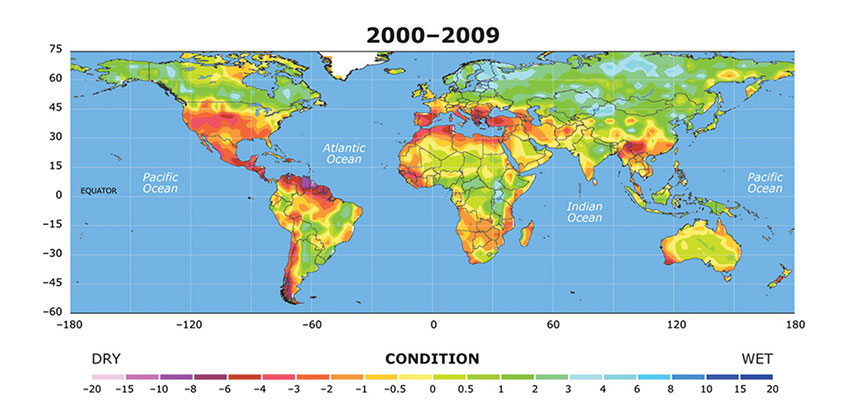
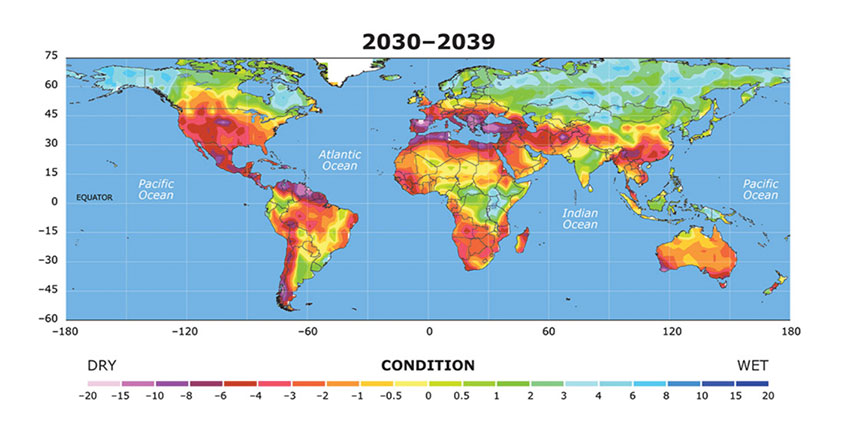
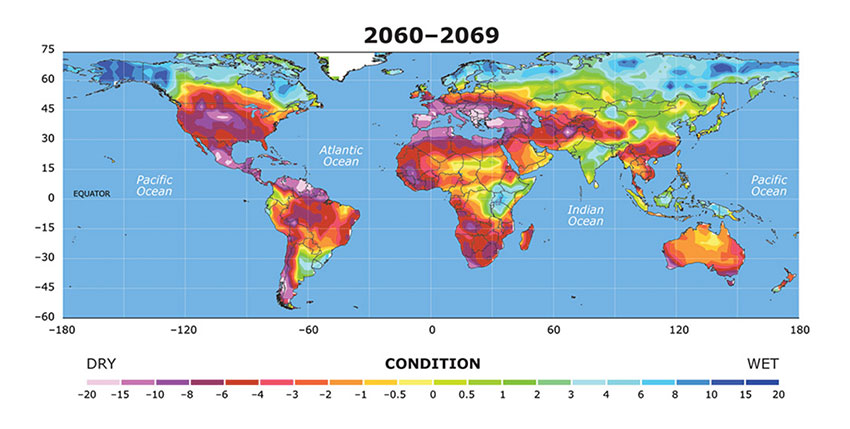
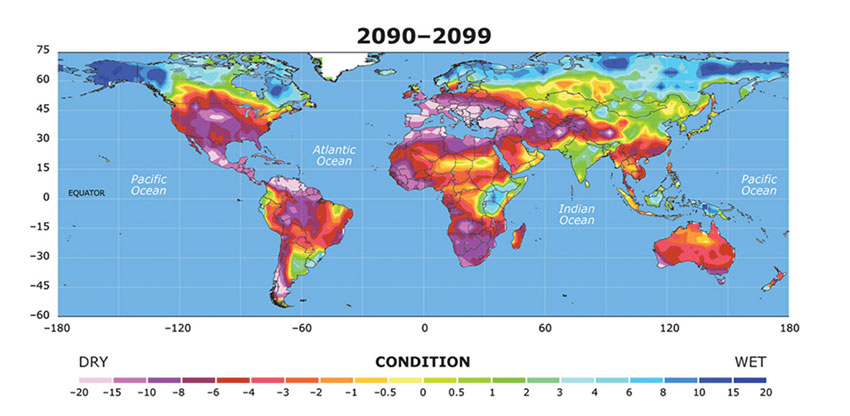
Should these models prove accurate, even fractionally, it risks the survival of billions of people – saying nothing of supporting an ecosystem, nor the conflicts spawned by such circumstances – and even wealthy nations will face major complications to life as they know it.[46]
If that wasn’t bad enough, a substantial portion of our remaining fresh water supplies are too toxic for human consumption. Industrial contamination, for example, has rendered 60% of Chinese rivers unusable for drinking, bathing or agriculture according to data published by the Chinese Ministry of Water Resources.[47] That figure rises to 70% when it comes to Chinese lakes and 80% when it comes to wells that source groundwater – 90% when that groundwater is sourced near cities.[48]
Another example is India. Upwards of 50% of the country faces extremely high water stress according to a World Resources Institute study.[49] The study found that Indian drought conditions have become so severe that 330 million people – greater than the population of the United States – are living in a dust bowl. The situation has become so dire that the nation's coal-fired power plants are shutting down as there’s not enough water to generate steam – with armed guards being posted at dams to prevent water theft from desperate farmers.[50]
A recent report by WaterAid, an international organization promoting greater water sanitation and hygiene, estimates that 80% of India’s surface water is severely polluted and contaminated with water-borne disease.[51] A separate report from India's Centre for Science and Environment estimates that roughly 80% of Indian sewage flows untreated into its rivers, and that out of 8,000 towns surveyed by a pollution control board, only 160 had both functioning sewage systems and a sewage treatment plant.[52]
India and China’s population, combined, represent 35% of humanity.
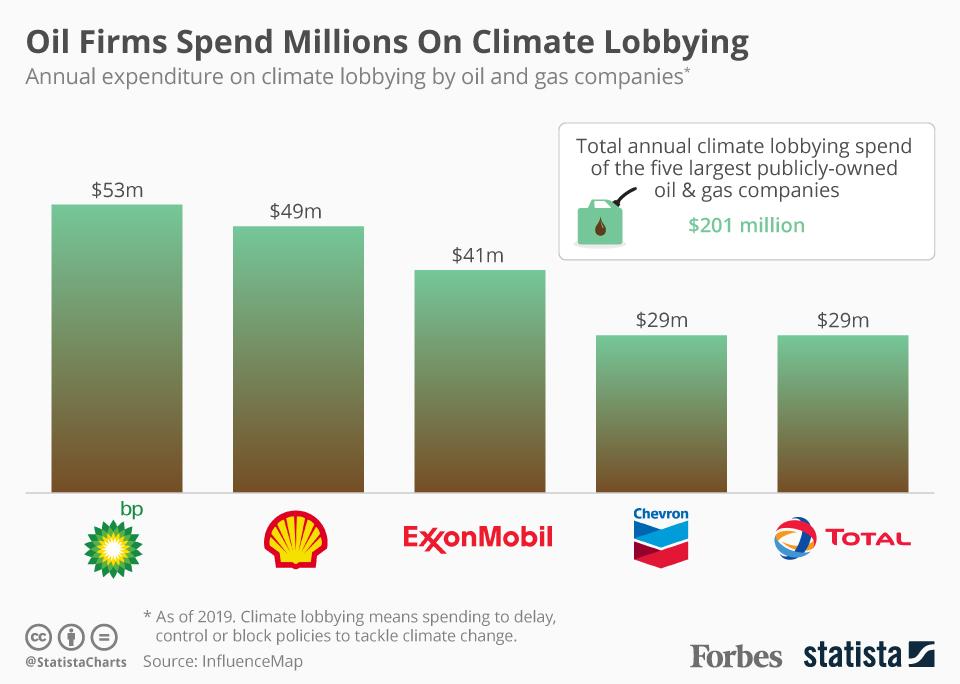 This is all before the impact of climate change, a factor that by itself adds massive gravity to our current state of affairs. As extensive lobbying and campaign “contributions” from the fossil fuel industry have turned the looming crisis into a political issue,[53] the basic principle that more carbon in the atmosphere leads to a warmer climate has been undermined by disingenuous partisan dismissals.[54]
This is all before the impact of climate change, a factor that by itself adds massive gravity to our current state of affairs. As extensive lobbying and campaign “contributions” from the fossil fuel industry have turned the looming crisis into a political issue,[53] the basic principle that more carbon in the atmosphere leads to a warmer climate has been undermined by disingenuous partisan dismissals.[54]
While this has hindered effective policy measures to reverse course, the rapid increase in global temperatures, accelerating loss of polar ice, increased frequency and severity of droughts, wildfires, floods, and other natural disasters have evaporated any doubts held in good faith as to the validly of the warnings echoed by the nigh-unanimous majority of the scientific community.[55] (Chart source.[56] )
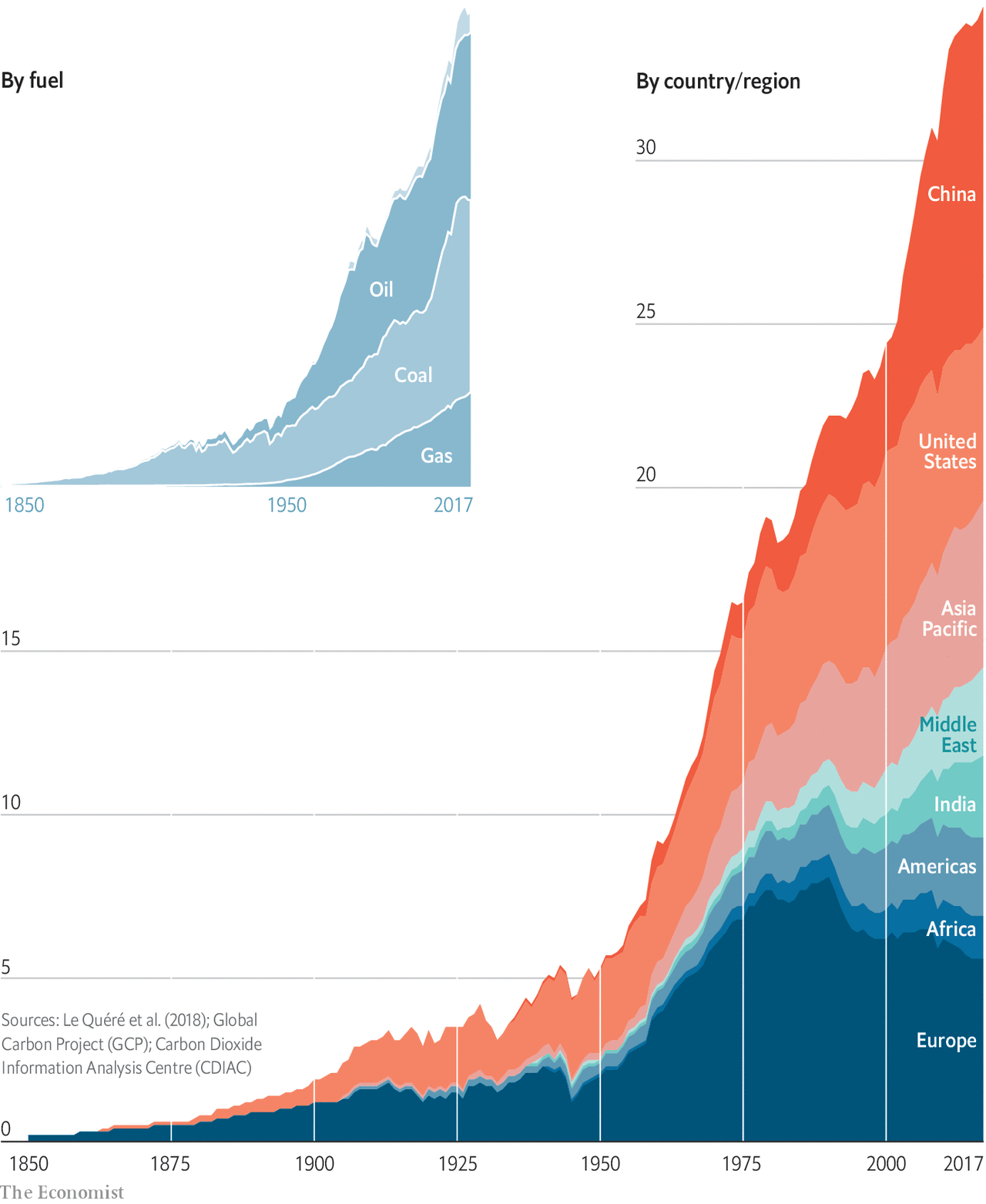

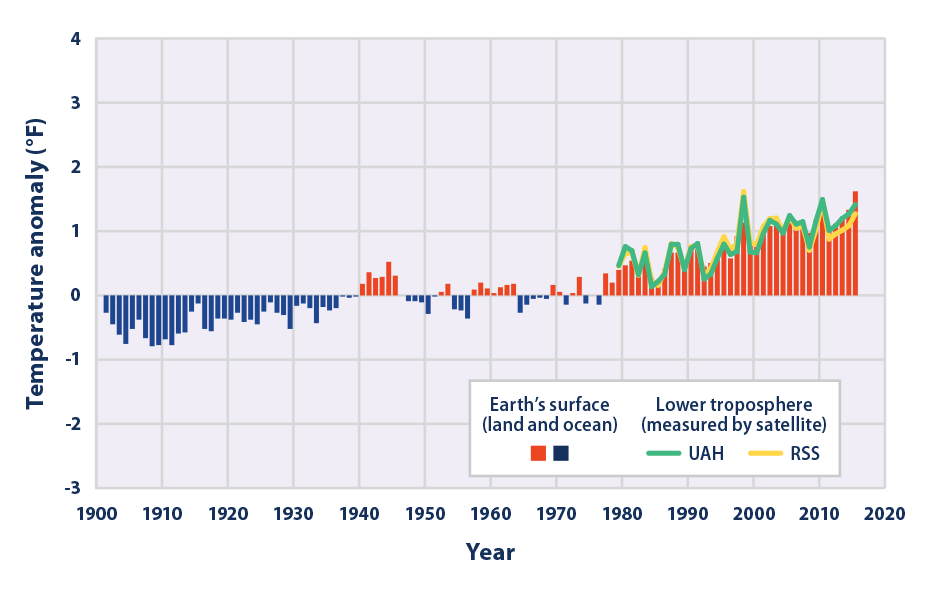
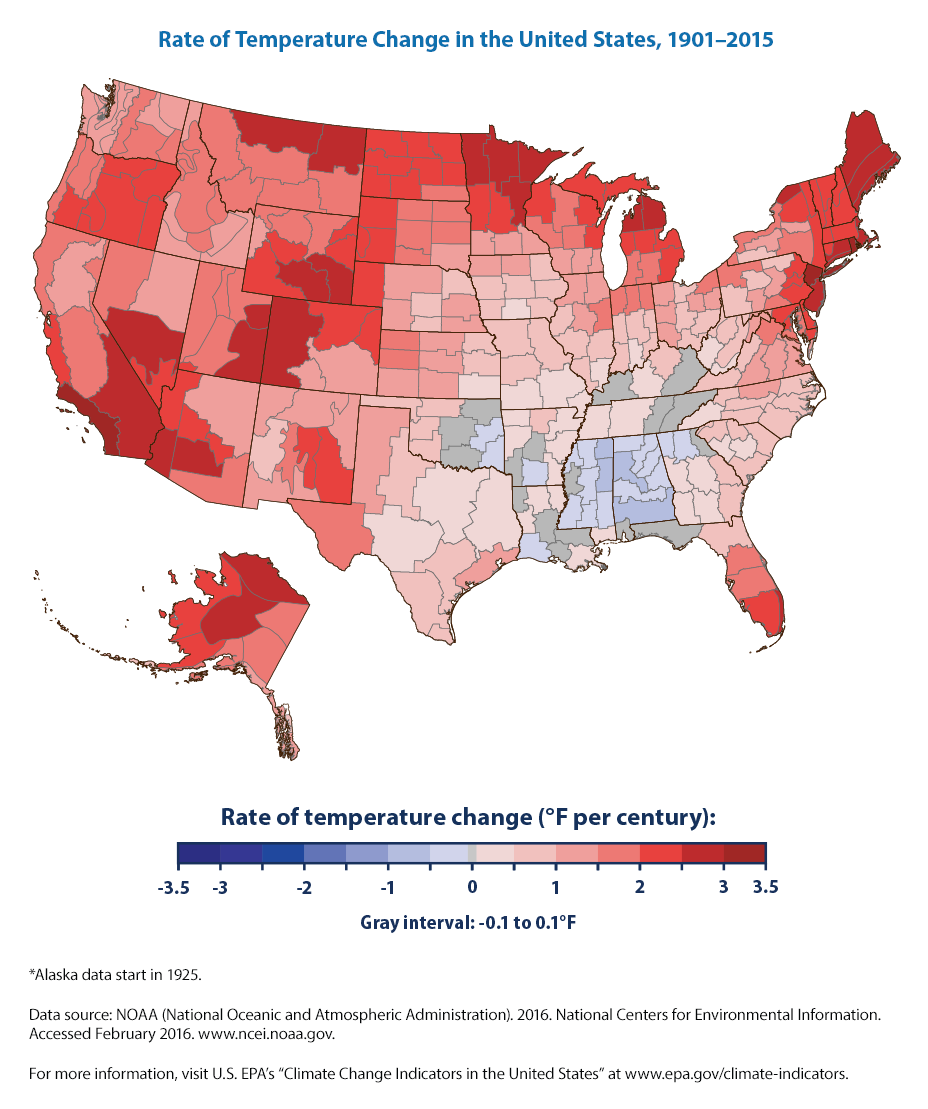

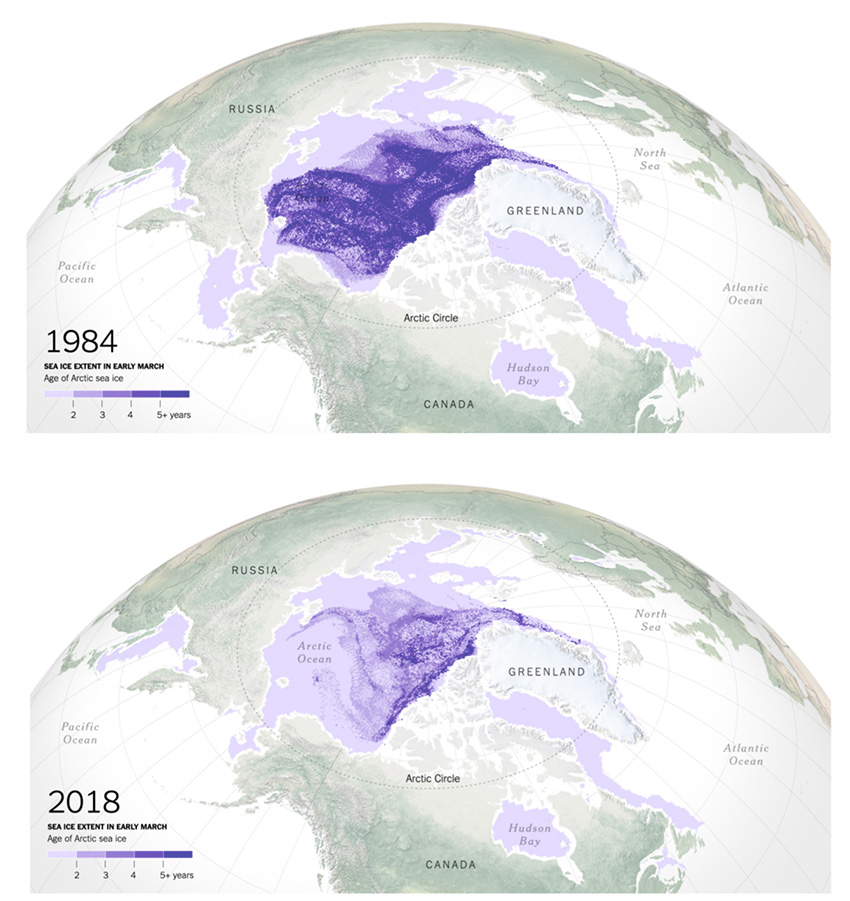
Yet the ecological consequences of a warming climate have greater fallout to our society. Their impact on trade, security, economy, public health and mass-migration all have worldwide implications.[63] The global food supply, however, remains perhaps the most imperiled. As water (and oil)[64] are vital to producing and transporting food, their scarcity alone would substantially disrupt our ability to feed our growing world. Climate change makes that task inexorably harder, and substantially more expensive.
Between 2006 and 2008, world average food prices rose 107% for soybeans, 136% for wheat and 217% for rice.[65] A 2010 study by the International Food Policy Research Institute estimated that the price of corn, wheat and rice will rise by at least 60% by 2050.[66] A 2012 report by Oxfam – one of the largest humanitarian charities in the world – estimates that by year 2030, food prices will rise 107% for rice, 120% for wheat and 177% for corn compared to their baseline price in 2010.[67] Oxfam’s report stated further that:
We must also contend with the fact that precious little of our situation is aided by the realpolitik of our time. The United States has been at war for the past eighteen years as conflicts continue and self-perpetuate over much of the globe. Faith in the promise of globalization and global institutions has retreated in many of the western cultures that gave them life. With more than 65 million people displaced around the world currently, millions of refugees are arriving in other nations as unwelcome aliens.[69] The storms brewing on our near horizon don’t present mitigating effects to this dynamic, they’re potent accelerants. Humanity has never before seen what happens when several hundred million people migrate in desperation – and these circumstances stand to impact billions of lives. If current trends continue, few doubts remain that our future may bear such witness.
By themselves, any one of these problems are calamitous – be it ecological collapse, unsustainable resource extraction, climate change, or the accompanying risks to the global food supply and mass migration that comes with all of the above. Yet none of them exist in vacuums. Their arrival is in unison, and they are manifesting today – and worsening – with combined effect.[70] Even a casual observation could see how their results risk spawning humanitarian crises and breakdowns in social order that could fundamentally compromise the global economy and the state of global security.
As we saw in early 2020, COVID-19, a novel respiratory virus, brought the world to its knees. Foreign and domestic supply chains were stretched so far past their breaking points that it became effectively impossible for developed nations to source even basic household items like bleach, hand sanitizer and toilet paper – let alone medical necessities such as masks, ventilators and hospital intubation equipment. Our social functions were pummeled to a standstill, and even first-rate healthcare systems were overwhelmed to the point of paralysis.
This was the result of a single infection with a relatively low fatality rate. When we consider what might happen if a billion people were to run out of food or water? Or if climate change were to displace hundreds of millions of people? Or if Earth’s ecology collapsed alongside its ability to support humanity’s existential foundations? It’s hard to overstate the danger any one of these events would present to our social order and our logistical capabilities to deftly respond to crises. Yet the simple math of our situation shows that the likelihood of each these results coming to pass – in unison – increases as long as current trends persist.
This reality exposes a fundamental truth of human nature and the actions of nations: of the motives that cause us to take up arms against one another, few, if any, are greater than resource scarcity and the economic damage caused as a result.[71] As individuals, people may fight over any number of reasons, be it religion, nationalism, identity or pride – but nations aren’t driven by causes so fickle.[72] Nations are driven by the resources that sustain their existential basis – the resources that power the vast unseen functions which enable a modern, interconnected society. And should they not manifest in either perception or reality, the uncompromising nature of desperation and need beats the drums of war to unleash the horror that follows. Most every conflict, occupation or atrocity on a large scale can be attributed to this fact.[73] The entirety of human history, even if varnished through a rose-colored sheen, provides a bitter testimony.
What might ultimately result from the combination of these circumstances is of course not yet known. Yet what remains known is that the darkest examples of human nature manifest in times of ecological, geopolitical or economic strife.[74] Further known is the possession of at least 15,000 nuclear weapons in the hands of nine countries – thousands of which can be launched in minutes.[75]
Some macabre trivia: a single Ohio-class United States Navy submarine is capable of raining thermonuclear warheads on as many as 288 targets within a range of 7,000 miles – each with 2,500% greater destructive power than the atomic bomb dropped on Nagasaki.[76] The U.S. Navy has fourteen of such submarines. The Russians, Chinese, French, British, Indians and Israelis[77] each have their own, and that’s on top of the land-based missiles and aircraft that can be used to deliver thousands of nuclear munitions to any corner of the globe within an hour or less.[78]
There are fewer than 4,500 cities on the planet with more than 150,000 people.[79] Humanity possesses an equivalent of four nukes for each.[80]
It’s a hardened truism that society is intimately acquainted with prophecies of doom. It’s also true that people have been harking about things “going to hell in handbaskets” since we had words for either. Fear sells. That’s why the boy cries wolf – a lesson well-known to any politician, theologian or journalist worth their title. And when dark nights eventually turn to dawn and there remains no wolf to be seen, we become numb to future bells tolling its arrival.
Yet the quintessential point of the fable is that the wolf does one day arrive, to either be defeated or devoured by. That day is now.
The multitude of problems facing our future place the foundations of our civilization in existential peril. The continued survival of not only our way of life, but our very species and the planet we call home is incumbent on their solution. Our hands, in our time, are tasked with either developing that solution, or failing to. Failure in this context is not quantified by a loss of money, power, prestige or reputation. It’s quantified by the immolation of our civilization as we know it. The extinction of Earth’s natural beauty. And, ultimately, the ashes of what we love and hold dear. That is the stone-cold reality of our present state of affairs.
But The Next Giant Leap wasn’t written to bow to that reality. It was written to change it. And it starts with a story of technology.
Ever since we invented machines that could perform at greater levels of speed and precision than human hands, we’ve rapidly increased our capabilities to build advanced systems: jet aircraft, smartphones, supercomputers, satellites and spaceships. And while these capabilities have caused problems, they can derive even greater solutions.
Because of technology, billions have been brought out of poverty, devastating diseases have been eradicated, vast distances have been spanned, veritable wonders have been built, and transformational new ways to process and communicate information have been developed.
Indeed, as you read this, a single smartphone-wielding bartender in Mombasa, Kenya today has instantaneous access to a wealth of information the world’s governments, universities and corporations combined didn’t have when The Simpsons first aired.
Technology made all of this possible. Yet we’ve now reached the point where sophisticated systems – systems which, thirty years ago, took millions of dollars and months to build – can be inexpensively manufactured on automated assembly lines in hours. This capability has been extended to cutting-edge aircraft, advanced electronics, even large-scale infrastructure. But it can now also be extended to energy-generating systems of all forms – small modular power plants, systems for energy transfer, large-scale storage and energy management, mass-produced wind turbines and solar panels – enabling us to generate energy on far higher scales than was ever before possible.
But what if we took things a step further? What if instead of just mass-producing energy technologies, we also built them to work together by design? In the era of the smartphone or smart car, why not have a smart power plant or smart power grid? And, having done that, what happens if we apply all of the technological advancements we’ve recently made within and outside of energy generation, and combine them into one intelligent system for energy and resource production that can be easily scaled and deployed worldwide?
We don’t yet have a system today that can answer these questions. So, we’re going to take the opportunity to build one that can – right here, in this book.
The Next Giant Leap outlines blueprints for a system to solve resource scarcity and climate change. This system is called “Scarcity Zero” and it is an open-source framework of the best energy technologies we have available, designed to work together in a way that makes them greater than the sum of their parts in terms of output, efficiency and flexibility. As a framework, Scarcity Zero is designed to be deployed rapidly on a large scale to turn the tide against the ecological, climate and resource problems of our time. Its goal is to shift the foundations of how we generate energy to in turn shift the foundations for how we acquire and distribute resources – and, in the process, permanently erase the concepts of scarcity and need.
As the underlying conceptual structure for a system, frameworks apply in varied contexts, but their greatest applications are in software. In software, frameworks are virtual tools that enable integrated, cooperative deployments of different technologies in a way can be both flexible, modular and standardized. They’re what made 0’s and 1’s into the interconnected world we live in today. Software can be developed and applied for the ever-better management of data, goods, currency, ecosystems and even people. It can also do the same for energy and resources in a new paradigm of global abundance.
Scarcity Zero’s DNA is software for energy generation and resource production through an indefinitely scalable and replicable method. By heavily leveraging sophisticated mass-production and modular, standardized deployment strategies, this approach allows us to lower the price of energy to the extent where it becomes feasible, for the first time in our history, to synthetically produce critical resources on an effectively unlimited scale. No matter how much energy or resources are consumed, the system can always produce more at a rate higher than that of consumption – a feature by design.
This framework is environmentally friendly.
This framework is affordable.
This framework is sustainably powered.
This framework is built with technologies that can exist today.
And, this framework can be deployed anywhere in the world to functionally end resource scarcity – and do so with finality.
If we can unchain ourselves from the eternal problem of resource scarcity and the untold human potential it consumes, it frees up the immense resources devoted to extinguishing its fires within a scarcity-dominated world. We can then invest those resources in social advancement and ecological healing, powering a perpetually ascendant course. This wouldn’t cost us more, and would ultimately cost us less – not just in terms of money, but also in terms of focus.
If we are no longer forced to surf a never-ending tsunami of social maladies, we can devote greater attention to improving our lives and human civilization as a whole, solving long-vexing problems and addressing humanitarian crises that have plagued us for millennia.
With the technologies behind Scarcity Zero and the framework they power, we can change the world.
And we can build it better, stronger and brighter than before.
